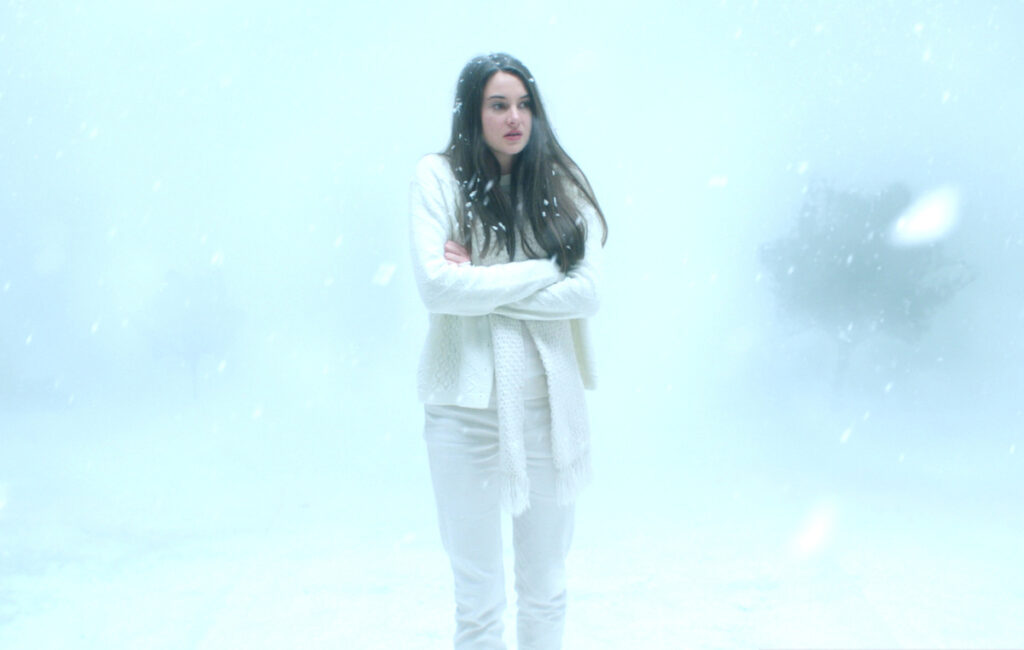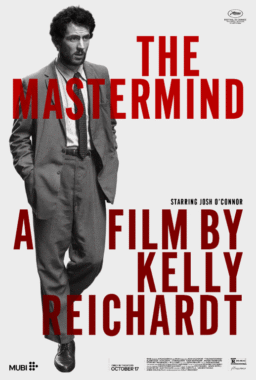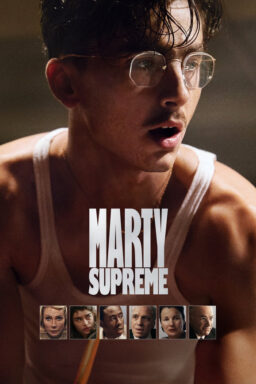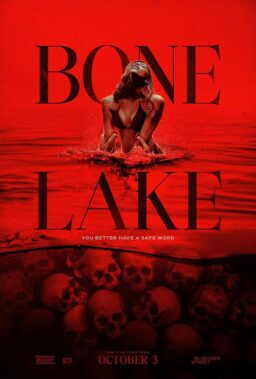Editor’s note: Mary Sollosi is one of six recipients of the Sundance Institute’s Roger Ebert Fellowship for Film Criticism for 2014. The scholarship meant she participated in the Indiewire | Sundance Institute Fellowship for Film Criticism, a workshop at the Sundance Film Festival for aspiring film critics started by Eric Kohn, the chief film critic and senior editor of Indiewire.
I asked author Laura Kasischke, whose 1999 novel “White Bird in a Blizzard” was adapted for the screen by filmmaker Gregg Araki, whether she had seen “Saving Mr. Banks“. She hadn’t, so I described the premise, putting emphasis on P.L. Travers’ unwillingness to allow her novels to be made into a movie. “No,” she said, laughing, “I haven’t had that feeling.”
Kasischke had a much more laissez-faire attitude than the famously difficult Travers (“I’m just used to signing off and waiting to see what happens,” she told me). “It’s based on my book,” she acknowledges, “but it’s not my book. So, you know, there’s a lot of freedom in that… A book is so different from a film.” It’s a delicate distinction that the devoted fan bases of YA literary behemoths, for example, often fail to see: the movie never can exactly be the book, and adapting for the screen is an art in itself. During the Sundance Film Festival, we talked to the makers of three films about the challenges of adapting from different sources: a novel, a memoir and historical accounts.
Araki both directed and wrote the screenplay for “White Bird in a Blizzard,” which recently premiered at the Sundance Film Festival and tells the story of a teenage girl (Shailene Woodley) who comes of age just as her beautiful but disturbed mother (Eva Green) mysteriously disappears. “I actually find that adapting a book is, in a way, kind of easier than writing an original screenplay,” admits Araki, whose 2004 film “Mysterious Skin” was also adapted from a novel. “To me, it’s more like editing a movie—it’s sort of taking all the dailies and distilling it to the best takes, and the essence of what the story is.”
What enabled Araki to be true to the essence of Kasischke’s source material, he explains, was that it moved him. “I have to connect to the material,” he tells me, and from there, “it’s instinct, kind of. I really loved the book, so I really knew that I wanted to stay true to what the book was about, and the essence of the book, and the spirit of the book.”

Capturing the spirit of a book is the elusive, rather indefinable goal of adaptation; a novel can’t be translated directly to the screen, as from one language to another, but must be reimagined and rebuilt for a completely different medium. In addition to some of the plot streamlining that is necessary for adapting a 240-page book into a 90-minute movie, Araki moved the setting of the novel to his native Southern California from the Midwest, as well as having it take place a few years later, in order to “relate more directly to the adolescence of [the main] character.” So in both what he retained from the novel and what he changed, his personal connection to the film he was making remained crucial.
I asked Kasischke how these little changes struck her. “Something about the atmosphere was right that didn’t really have anything to do with exact dates or exact locations,” she replied, “I just felt like he was really true to the spirit of it.”
Jeff Preiss, whose film “Low Down, which also showed at this year’s Sundance Film Festival and is based on Amy Jo Albany’s memoir of the same name, faced different challenges in the adaptation process. An account of Albany’s young life (Elle Fanning portrays her in the film), spent in Hollywood in the 1970s with her heroin-addicted father, legendary jazz musician Joe Albany (John Hawkes), the book is written from her highly subjective, remembered point of view. Furthermore, it consists primarily of short episodes—a technique that effectively illustrates the inconstancy of Amy’s life with her father, but does not provide a linear, easily adapted narrative for the screen. Fortunately for Preiss, Albany was one of the screenwriters.

“I think it gave her a chance to rework some of the ideas of the memoir,” Preiss tells me, “the screenplay itself is an act of memoir writing.” Regarding the subjective point of view, he says they negotiated that very carefully in the film, as “it is a memoir of [Amy’s] father, and of her life—it is not a memoir of her,” so the focus is on how she sees the world around her rather than on how the audience sees her character. “The film is this story outside of Amy, but Amy’s memory is our periscope that allows us to witness all of those things,” Preiss explains. “Cinema can do that visually—the idea of first-person prose.”
Cinematographer Christopher Blauvelt won the U.S. Dramatic Cinematography Award at Sundance for “Low Down”‘s stunning visual first-person prose, and Preiss credits the poetry of the camerawork and of Michael Saia’s editing for the film’s sense of perspective, which requires that both the objective images and the cuts between them “suddenly feel to the audience like subjective psychological space.”
Albany writes in her memoir, “anywhere I went with [my dad] sparkled like a fun fair.” It’s hard to believe, on the one hand, considering some of the horrors Albany witnessed as a child. But at the same time, the little girl’s genuine, unqualified adoration of her enormously flawed father is the soul of the book, and what makes it a memoir of him, and how she sees him, more than it is a memoir of herself.

One of the joys of bringing the book to the screen is that Preiss, a self-described “jazz fan to the core,” could make the music (the film uses actual recordings of Joe Albany) a more involved part of the storytelling. “When I listen to Joe’s playing, I hear a character sketch of Joe,” Preiss says, “so by putting it into the context of a biography of Joe, I think all of a sudden, there, the music makes sense, because you’re getting the music and the man simultaneously.” It’s in the very nature of jazz, he explains, that it requires music “to be personalized and unique and spontaneous—requires it to be at the very core of the musician’s self.”
Jazz also informs the film’s structure. In selecting and piecing together episodes from Amy Jo Albany’s memoir, Preiss says they were “faced with a choice of either embracing these unrelated episodes, or making it a story arc. And I really didn’t think either was right.” Instead, they touched on various vignettes and characters in a more “skeletal” arc, as Preiss describes it. The film is split in two halves, both of which have three acts. But somehow, the whole movie has three acts. “This, to me, is very jazz-like,” Preiss explains, “Sometimes in jazz, you can count off two different times, depending on how you’re hearing the music—two different times can be valid to count simultaneously, and that was the sort of sensation I wanted to give it as a whole.” To capture the spirit of “Low Down”, Preiss made movie jazz in the cinematic first person. What could be more true to the book than that?
By pure coincidence, “White Bird in a Blizzard” and “Low Down” are both about young women achieving independence from their parents. “The Better Angels”, the feature film debut of writer-director A.J. Edwards that also premiered at Sundance in January, is about a young boy (played by Braydon Denney) dealing with the loss of his beloved mother. The year is 1817, and the boy is an eight-year-old Abraham Lincoln.

One of the challenges of adapting from history is that there is no single source from which to extract the “spirit” of the story. Lincoln scholar William Bartelt served as a historical consultant on the film, and his book “There I Grew Up” was one of the many biographies of the sixteenth president that Edwards used in his meticulous research, in addition to such sources as nineteenth century journalist Eleanor Atkinson’s interviews with Lincoln’s cousin Dennis Hanks and, notably, “The Prairie Years,” Carl Sandburg’s celebrated poetic account of Lincoln’s young life.
“The Better Angels” is beautifully shot in textured black and white; the effect is much more impressionistic than documentary. The stylistic approach—as well as Edwards’ use of Sandburg’s work in his adaptation research—echoes the sort of poetic sensibility that Lincoln himself seemed to have; his only written accounts of this time in his life were a few poems. “The idea was to have a Lincoln film that was not so much in the head,” Edwards explains, “but more in the heart or the soul. So it’s visually expressed, not just a lineup of facts and story beats.”
“I think the idea of the movie was not so much another biography,” Edwards clarifies, “this is an origin story that is not just giving you the facts of a life, but the cornerstones on which a great man was formed. His sense of tolerance, faith, hope.” He cites Plutarch’s “Lives” as an example of the old tradition of “testimonies of how someone’s character was shaped, or how their virtue was built.”

Edwards says that choosing which slice of Lincoln’s life to portray onscreen was a huge question in the early development stages. He refers to Aristotle’s “Poetics as having the best analogy for narrowing it down—”You don’t document the whole Trojan War in your story,” Edwards paraphrases, “you just pick a battle.” They ultimately chose the family’s arrival in Indiana and the death of Lincoln’s biological mother—making the focus his “acceptance of [his stepmother] that allows him to evolve to the next stage…that’s what became the drama.”
One noteworthy detail of “The Better Angels” is that nobody talks about or directly addresses young Abe by his name. “I just wanted to keep things as mysterious and ineffable as possible,” Edwards says, “sort of along the lines of the way that Christ is treated in “Ben-Hur”—he’s just sort of alluded to in such a way that you don’t really need to do much.” Edwards also didn’t want to fall into docudrama—”there are certain conventions I tried to avoid.” Ultimately, the absence of Lincoln’s name being spoken highlights that he was a little boy like any little boy, and only the audience knows the great man he will become.
While Kasischke had no trouble letting Araki adapt her novel and Albany had a hand in Preiss’s adaptation of her memoir, there is no living person with sole ownership over Abraham Lincoln’s childhood. Edwards faces different judges than writers and fans: “Lincoln scholars—boy, are they tough,” he tells me, “The film is just beginning to reach historians, I hope it reaches more, and I’d love to enter into a dialogue with them about the strengths and weaknesses of the picture, historically.” And then there are the American people. “I felt immense pressure,” he admits, “and I still do, and probably always will. Because he belongs to everybody.”











